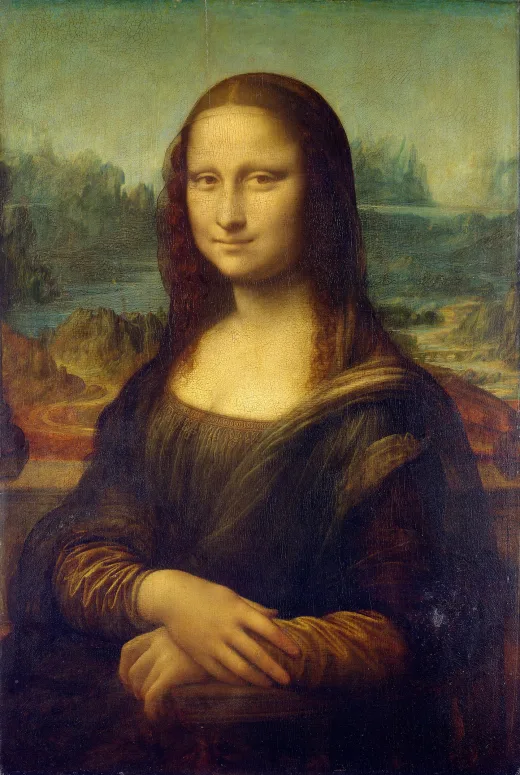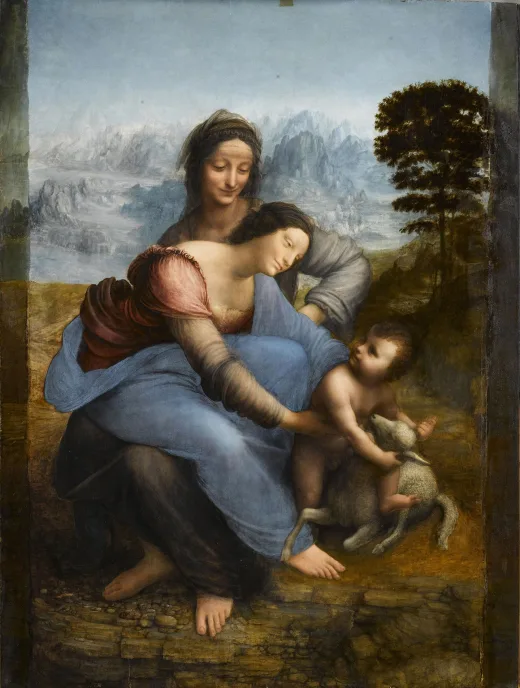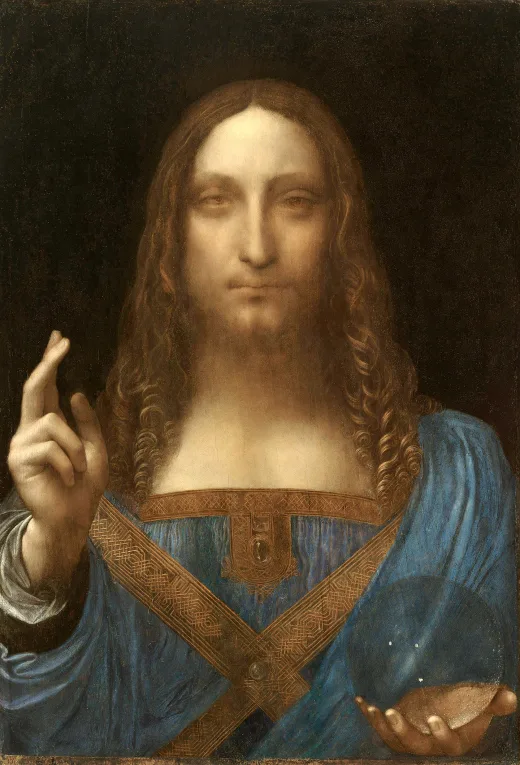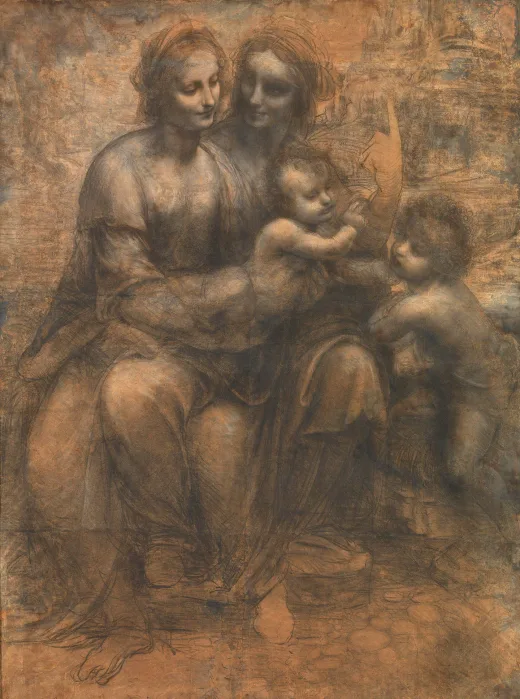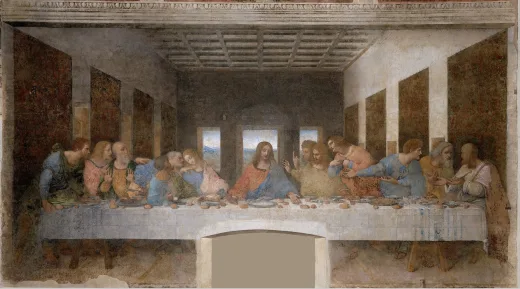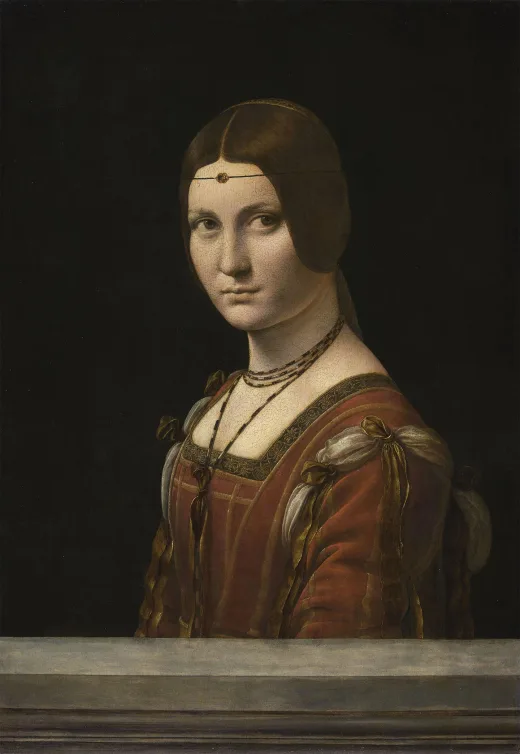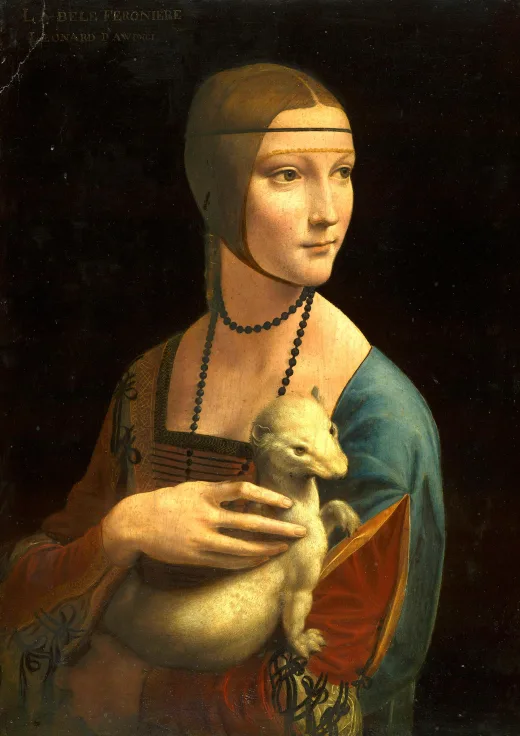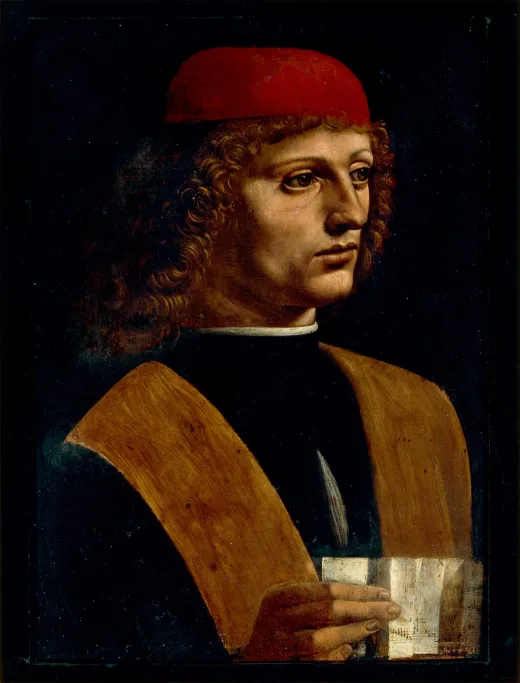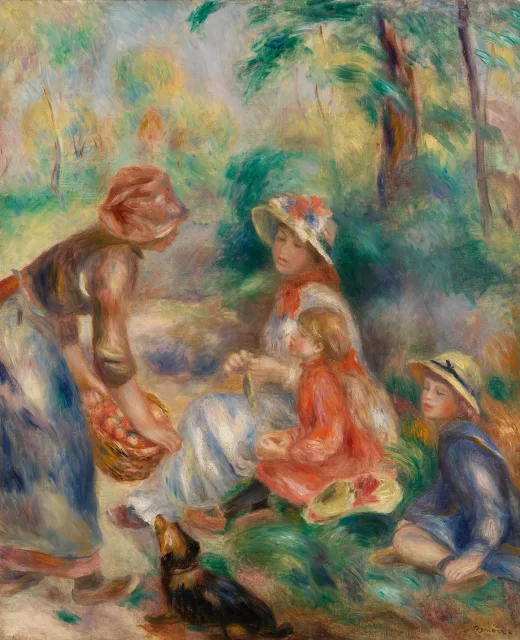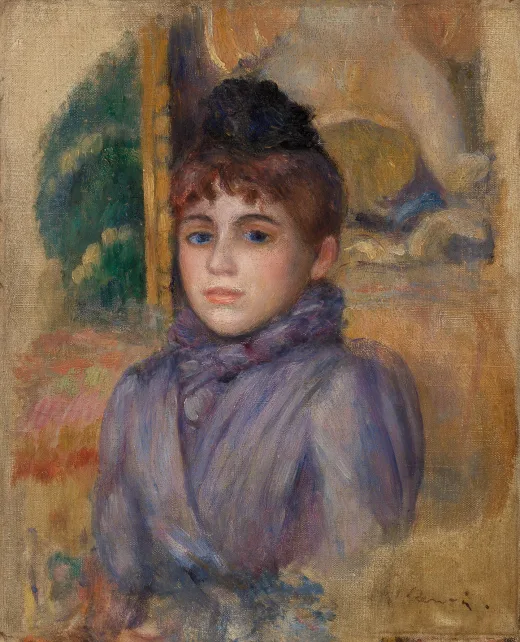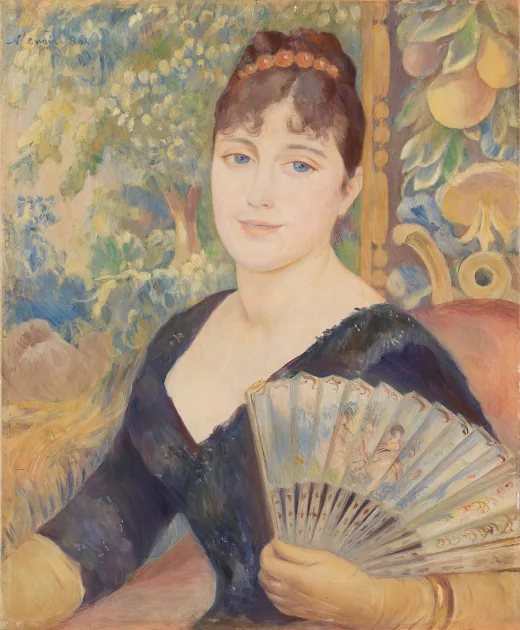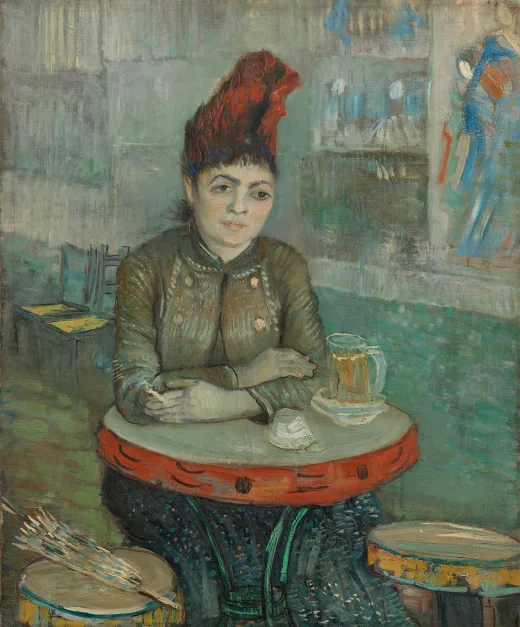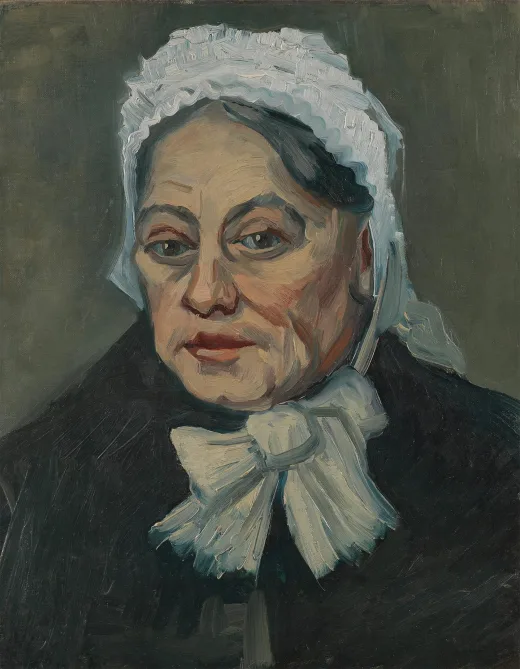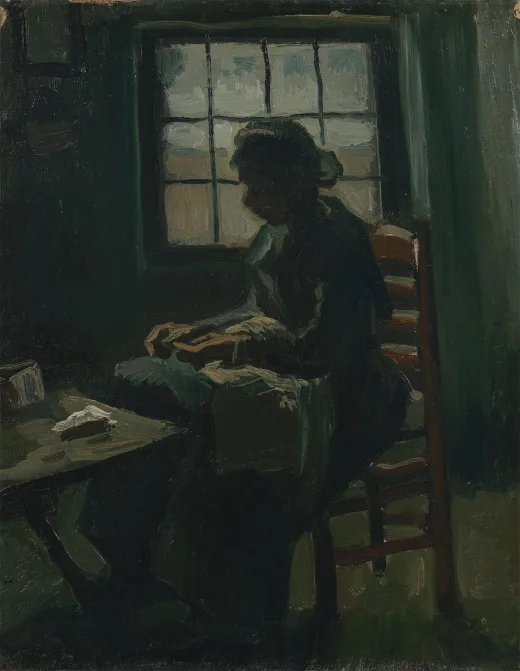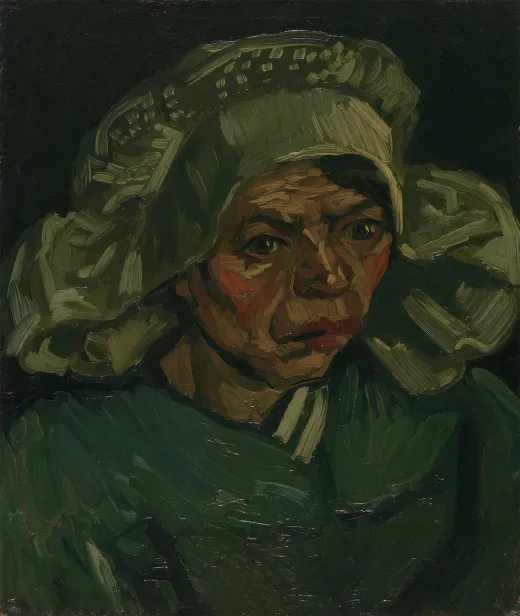达芬奇未完成的画作《散发女子头像》图片
原图尺寸:1654×2480像素(200 DPI)标清图
下载原图消耗2艺点
文件大小:3.21 MB
下载格式: JPG / ZIP
作品名称:散发女子头像
La Scapigliata
作品作者:列奥纳多·达·芬奇(有争议)
创作时间:约 1506–1508 年
作品风格:文艺复兴盛期
原作尺寸:24.7 × 21 厘米
作品材质:杨木板上油彩、棕色颜料和铅白颜料
收藏位置:帕尔马国家美术馆
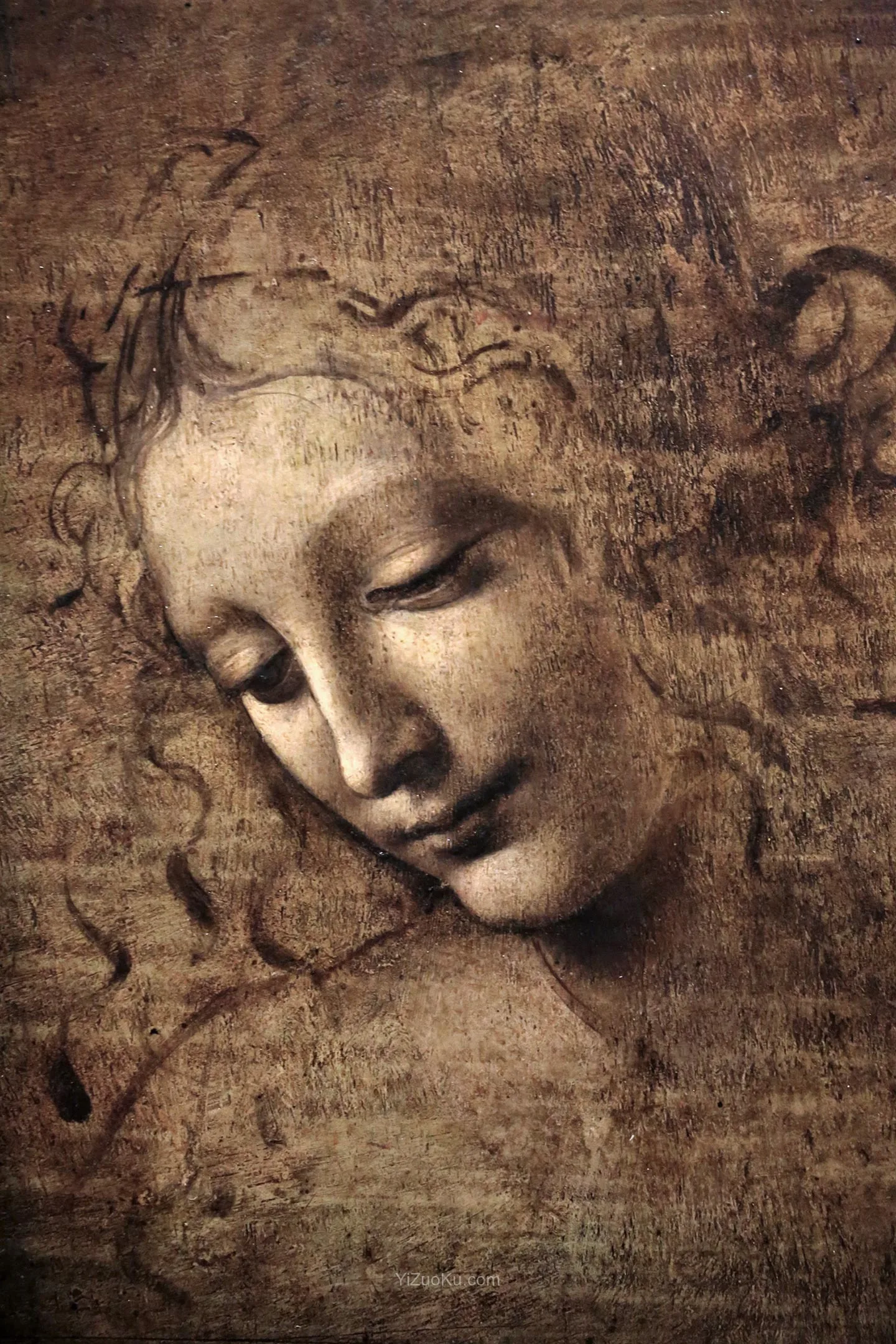
作品简介
《散发女子》(意大利语La Scapigliata,意为"秀发凌乱的女士")是一幅未完成的画作,通常被认为是意大利文艺复兴盛期艺术家列奥纳多·达·芬奇于约1506-1508年间创作。这幅作品以油彩、赭石和铅白颜料绘制于小块杨木板上,其归属仍存争议,部分专家认为它出自达·芬奇某位弟子之手。这幅画因其摄人心魄的美感、神秘的神态和出神入化的晕涂技法而备受推崇。
关于这幅画的主题、创作年代、历史背景或创作目的,学界尚未达成共识。画中描绘了一位身份不明的女子低眉垂目,蓬松的秀发在背景中飘扬。关于画作主题存在多种理论:可能是未完成的《圣安妮》油画草图;为伦敦版《岩间圣母》或达·芬奇失传作品《丽达与天鹅》所作的研究;亦或是为了追求美学价值而刻意保留未完成状态的作品。
该画作有记载的最早收藏记录是1826年加埃塔诺·卡拉尼收藏出售给帕尔马国家美术馆(即其现藏地),但其存在证据或可追溯至1531年,当时它可能为伊莎贝拉·德斯特所拥有。尽管许多关于达·芬奇作品的研究对此画保持沉默,但大多数讨论过此画的学者都认为这是达·芬奇的真迹,在多个重要的达·芬奇作品展中亦被如此认定。
这幅画没有正式名称,但因其描绘对象蓬松散乱的秀发而获得"La Scapigliata"(意大利语"散发女子")的昵称。它还有许多其他与La Scapigliata结合使用的名称,包括《女子头像》《年轻女子头像》《少女头像》《女子半身像》《少女肖像》和《女性头像》等。
画作的真实创作意图尚不明确,它曾被不同学者称为素描稿、素描或油画。由于使用了颜料,严格来说应归类为油画,但学者们仍在讨论其具有的素描特质,常将其与达·芬奇早期作品如《三博士来朝》《荒野中的圣杰罗姆》,以及后期作品如《圣母子与圣安妮及施洗者圣约翰》联系起来。艺术史学家卡门·班巴赫建议将其描述为"毛笔素描"或"彩绘草图"。
这幅画绘制于一块24.6厘米×21.0厘米(9.7英寸×8.3英寸)的小型杨木板上,使用油彩、赭石和铅白颜料。它描绘了一位年轻女子未完成的轮廓:面容恬静低垂,松散凌乱的秀发在身后飘扬。女子双眼半阖,完全无视外界和观者,嘴角微微上扬,带着蒙娜丽莎式的神秘微笑。除占据画面大部分的面部外,其余部分仅勾勒出粗略轮廓,背景仅打好底色而未施彩。通过精湛的晕涂技法,面部与其他部分的差异被完美调和。艺术史学家亚历山大·纳格尔指出,晕涂技法使阴影完美隐藏了所有笔触痕迹,并特别说明阴影边缘通过精细的光影处理变得柔和,如下颌左侧的过渡。这种完成与未完成部分的对比美感,引发了一种猜测:画作并非未完成,而是有意保留草图状态。
画作主题至今成谜,现有理论均未能说服现代学者达成共识。一种观点认为这是为达·芬奇失传作品《丽达与天鹅》所作的研究,但现存摹本中的丽达发型比《散发女子》中更为精致,使该说法存疑。另有说法认为这是未完成的《圣安妮》油画草图,或是为伦敦版《岩间圣母》所作的研究。帕尔马国家美术馆的学者则认为,画中可能是某位无名女子的肖像。
La Scapigliata (Italian for 'The Lady with Dishevelled Hair')[n 1] is an unfinished painting generally attributed to the Italian High Renaissance artist Leonardo da Vinci, and dated c. 1506–1508. Painted in oil, umber, and white lead pigments on a small poplar wood panel, its attribution remains controversial, with several experts attributing the work to a pupil of Leonardo. The painting has been admired for its captivating beauty, mysterious demeanor, and mastery of sfumato.
There is no real consensus on the subject, date, history, or purpose of the painting. It shows an unidentified woman gazing downward while her hair fills the frame behind her. Many theories regarding the subject have been proposed: that it is a sketch for an uncompleted painting of Saint Anne; a study for the London version of the Virgin of the Rocks or Leonardo's lost painting of Leda and the Swan; or a painting left deliberately unfinished for its aesthetic value.
The painting was recorded in the sale in 1826 of Gaetano Callani's collection to the Galleria Nazionale di Parma, the museum in which it is currently housed, but proof of its existence may date back to 1531, when it may have been owned by Isabella d'Este. Although many studies of Leonardo's oeuvre are silent on the issue, most scholars who discuss the painting regard it as an autographic work by Leonardo da Vinci and it has been listed as such in various major Leonardo exhibitions.
The painting has no formal name but is best known by the nickname La Scapigliata (Italian for 'The Lady with Dishevelled Hair')[n 1] in reference to the tousled and waving hair of the subject. It has been known by various other names in combination with La Scapigliata, including Head of a Woman, Head of a Young Woman, Head of a Young Girl, Head and Shoulders of a Woman, Portrait of a Maiden, and Female Head.
The true intention for the work's creation is unknown, and it has been variously referred to as a sketch, a drawing, or a painting. Due to the use of paint, it is correctly described as a painting, but scholars continue to discuss its sketch- and drawing-like qualities, often linking it to Leonardo's early works such as the Adoration of the Magi and Saint Jerome in the Wilderness, as well as later ones such as The Virgin and Child with Saint Anne and Saint John the Baptist. The art historian Carmen Bambach suggests that it should be described as a "brush drawing", or as a "painted sketch".
The painting is executed on a small[n 2] 24.6 cm × 21.0 cm (9.7 in × 8.3 in) poplar wood panel with oil, umber, and white lead pigments. It portrays the unfinished outline of a young woman whose face gently gazes downward while her loosely drawn, dishevelled hair waves in the air behind her. The woman's eyes are half-closed and completely ignore the outside world and viewer, while her mouth is slightly shaped into an ambiguous smile, evocative of the Mona Lisa. Other than her face that takes up most of the painting, the rest of the painting is barely even sketched in, with a primed, but unpainted, background. The differences in the face and the rest of the painting are effectively blended by a mastery of sfumato. The art historian Alexander Nagel notes that the sfumato results in the shadows concealing any strokes or marks, and points out how the shadows are softened by careful lighting around them, such as on the left side of the jaw. The appeal in this contrast of the unfinished and finished parts has provoked speculation that the painting is not incomplete, but was left in a sketchy state on purpose.
The subject of the painting is unknown and no theory has proved convincing enough for modern scholars to reach a consensus about it. One theory is that the work is a study for Leonardo's lost painting of Leda and the Swan, but this is discredited by existing copies of the painting showing Leda with hair more elaborate than that of the woman in La Scapigliata. It is also claimed that the painting was a sketch for a painting of Saint Anne that never was completed, or a study for the London version of the Virgin of the Rocks. According to scholars at the Galleria Nazionale di Parma, the subject of the painting may be a portrait of an anonymous woman.
